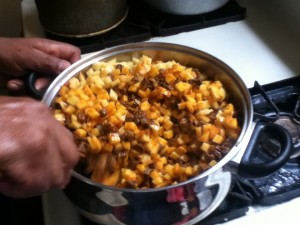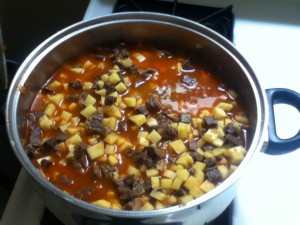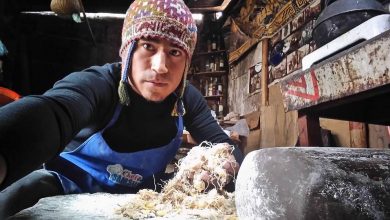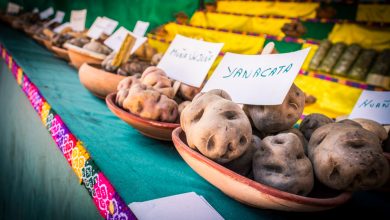Chef’s Sunday: Chanfainita, Immigrant Genius that Transcends Boundaries

Chanfainita is a dish that is as Peruvian as ceviche or Lima-style causa. How did this delicious dish come to the Peruvian table?
In colonial times, the slaves from the African continent brought by the Spaniards did not have the good fortune of eating any kind of good meat, as normal people did. They were limited to eating viscera.
Nevertheless, the kitchen’s genius can do wonders. The slaves had an impact on the Peruvian future when they expanded the custom of eating entrails. With time, the Afro Peruvians fused their techniques of eating organs with products from the Andes and the resulting dishes were amazing.
Since Peruvians were now accustomed to eating viscera, it was easier for the general public to accept new dishes built from internal organs which earlier were impossible for them to even think of eating. Thanks to this wonderful dishes such as cau cau, the fabulous anticuchos, kidneys in wine sauce, breaded udder, tongue stew, and others were invented. Peru may be the only place where we eat liver cut as if a steak.
We are grateful to the slaves for having greatly enriched Peruvian gastronomy along with our other Peruvian ancestors. This is one more test that the union of races can create outstanding and unimagined things that leave a mark on history.


Ingredients
Salt
Pepper
Ground cumin
200 ml vegetable oil
2 red onions
100 ml garlic paste
100 ml yellow ají paste
100 ml paste made from ají mirasol.
300 ml ají panca
1 kilo white potatoes
½ kilo cow lungs
Stems from hierba buena or mint
Broth made from oxbones or simply seasoned with beef broth powder.

Preparation
Clean the lung or ask that the vendor clean it. Once clean add the lung to abundant salted water and half of the hierba buena (or mint) in a pressure cooker. Close and let it cook for 25 minutes if it is a normal pressure cooker until the lung is soft. Immediately cut the cooked lung into 7 mm squares and reserve.
In a large pot or dutch oven we make a sofrito. We add oil and wait a few minutes for it to heat. To this we add the diced red onions with a bit of salt and pepper. We let it cook for three minutes. We then add the garlic paste and mix well. This we cook for two minutes without letting it burn. We then add the ají pastes and the ground cumin and cook the mixture for approximately ten minutes. This sofrito needs to cook until it loses its raw smell but without it burning.
We then add to the sofrito the diced potatoes and the diced lung. We stir it to cook evenly and then add water to the level of the potatoes (calculate carefully so the flavor doesn’t diminish with too much water). We now add the hierba buena (or mint) and cook until the potatoes reach their point of being cooked but still firm. We then add the broth powder if we did not use broth made from oxbones. We correct the salt, add minced hierba buena or mint, and seve the dish with white rice on the side. Enjoy, provecho.

Translater’s Note:
Hierba buena has a fairly mild and delicate flavor, but is often not easily available outside of Latin countries. Peppermint or spearmint may be your only choices as substitutes, but beware. Their flavor is stronger, more pungent, and less sweet.
Yellow ají is common in Peruvian cooking and may be found at Peruvian or Latin American grocery stores as well as online. Ají panca is a dark red ají that is quite hot and yet sweet and perfumed. It is also available online or in Latin American grocery stores in its dried form. To make the paste you will have to soften the dried peppers in warm water and then grind them finely in a blender.
Both of these ajíes are known for their flavor and scent.
Ají mirasol is a fresh form of a yellow ají. In the United States is is only avialabe in its frozen form. Beware that there are people who grow hot peppers in the US and may offer what they call ají mirasol in farmer’s markets. But because naming in the US does not follow Peruvian conventions these are often not the same pepper though they may be tasty in their own right. For authenticity’s sake it may be best to seek the frozen peppers and make a paste from them.





